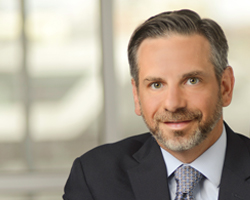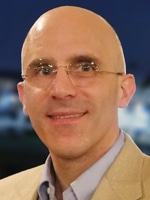
‘Oncologists will be
increasingly interested in having a pathology report that provides quantitative information that can
be delivered through
digital pathology.’
— Michael Montalto, PhD
“For some reason the digital pathology community has been skittishly avoiding the question as to what real clinical value digital pathology provides. But having the ability to understand a tumor and know if patients will respond to a treatment based on information from a glass slide that can only be gleaned from AI—that becomes powerful.”
When asked what the impact of digital pathology will be on immuno-oncology, Dr. Montalto says, “It will be pretty great, but I think the opposite is also true. Immuno-oncology will also have a huge impact on digital pathology, the direction in which it moves, the rate of adoption, and how we think of business models differently going forward, compared to the way we’ve thought about them over the last five or 10 years.”
Another obstacle to be overcome before more widespread adoption of digital pathology for primary diagnosis is the FDA’s “closed box” approval that tends to preclude interoperability of equipment.
“The current approval process resulted in a closed-system approval,” Dr. Tuthill says, “meaning that end users must use the exact components Philips had approved, even down to the level of the monitor or potentially the video cards.” That can wreak havoc on daily laboratory operations. “The reality is we may have pathologists working on several different monitors. And over the course of time, hardware expires and needs to be changed out. Must we do a revalidation every time we add a different monitor type or add a new computer?” If so, he says, that would mean hundreds of hours.

Dr. Tuthill
Dr. Tuthill believes it is incumbent on the pathology community to articulate the specific FDA requirements that are untenable in the real world. For example, while a monitor is important, it likely does not have the same impact on the validity of the whole system as does the scanner.
“Many people are taking the closed-system approach and trying to fit all of the variables in place and do the validations. That will be the case for two or three years,” he says. But then components will start to vary because of replacement requirements or different systems coming online. “By then we will be able to demonstrate which components need to be constrained and controlled as opposed to the components that may be able to have a little more exchange and variation. And hopefully the FDA will respond by changing its closed approach.” That, Dr. Tuthill says, will speed the rate of adoption.
Leica’s Clavel, too, recognizes “the pathology community is almost allergic to any kind of proprietary standards or closed systems that lock them in.” Locking in customers may be attractive to a vendor, he says, but not if the customers react strongly to it. Users are therefore best served by being vocal about their expectations.

Clavel
Adoption will also depend on the business need for digital pathology in a department. “Digital pathology is already here and already in play, and it will certainly change the paradigm of how we practice moving into the future,” Dr. Tuthill says. “But exactly how you leverage this technology must depend on supporting the business needs that you have in your lab. And whether you are talking digital pathology in your gross room, or digital pathology whole slide imaging for primary diagnosis, it is the business drivers that will force your hand and dictate where you are on the adoption curve.”
Clavel expects those business drivers to continue to change as the technology improves. “We always tend to overestimate the speed of adoption of new technologies, yet we underestimate the extent to which they will change the way people work when fully adopted,” he says. “Think of smartphones. It actually took a decade and a half for them to be fully adopted since the first forays in the early 1990s. Yet today they’ve opened up a whole new world of possibilities. It has taken time for digital pathology to get traction, and it will take more time to gain full adoption. But once we get there, we might enable things that haven’t even been imagined yet.”
For those who may have reservations about the trustworthiness of the artificial intelligence that Dr. Montalto believes can improve patient outcomes and thus bring digital pathology into full acceptance and adoption, Dr. Montalto says: “Take a step back and realize that AI has already been a part of our lives for a long time. AI has been used to fly planes on automatic pilot and is being used in cars for safety features. We are exposed to AI all the time, and we trust it because it works. Pathology needs to become friends with AI. That’s an important message.”
“Certainly we need more research, more validations, and more investment,” he adds. “But we also must find the value in improving outcomes, not just workflow and efficiencies.”
[hr]
Valerie Neff Newitt is a writer in Audubon, Pa.
 CAP TODAY Pathology/Laboratory Medicine/Laboratory Management
CAP TODAY Pathology/Laboratory Medicine/Laboratory Management
